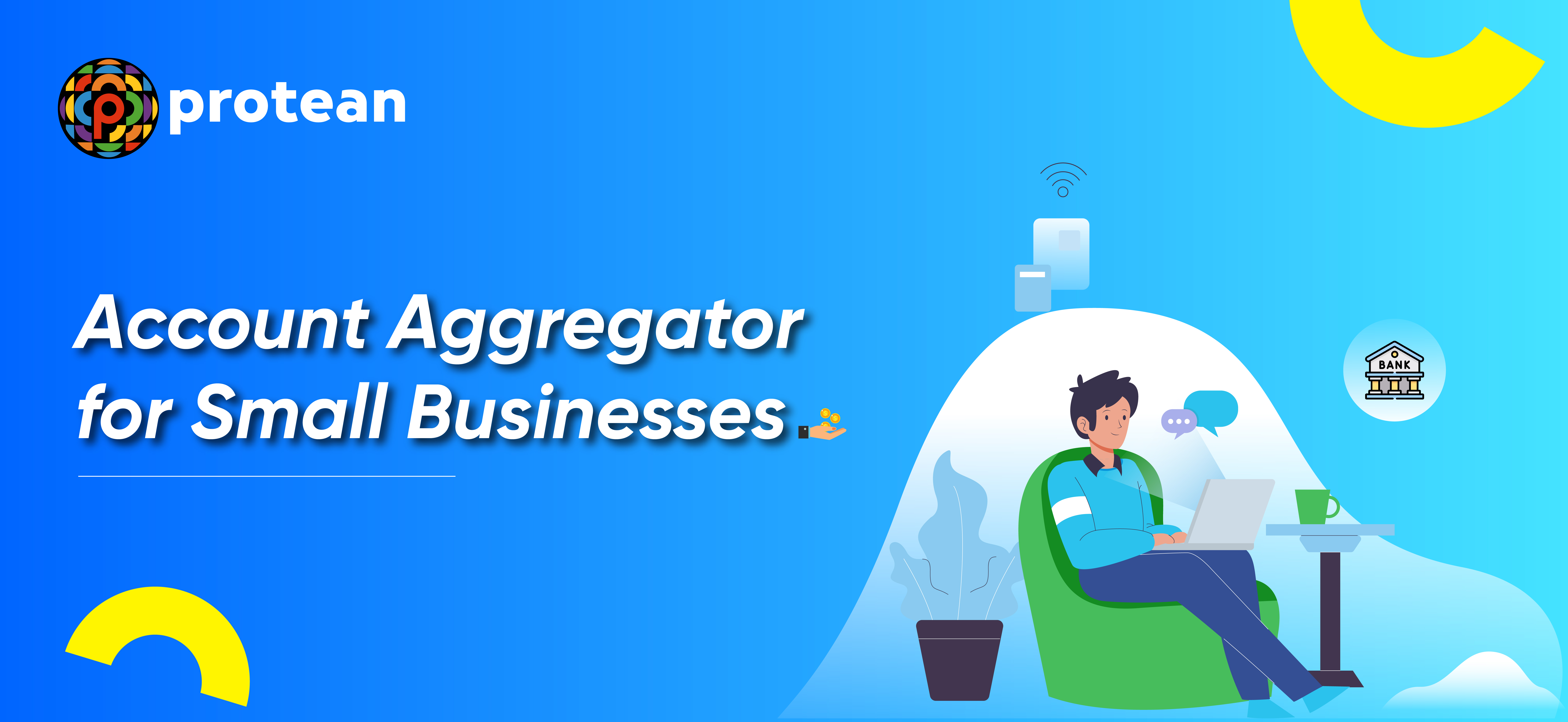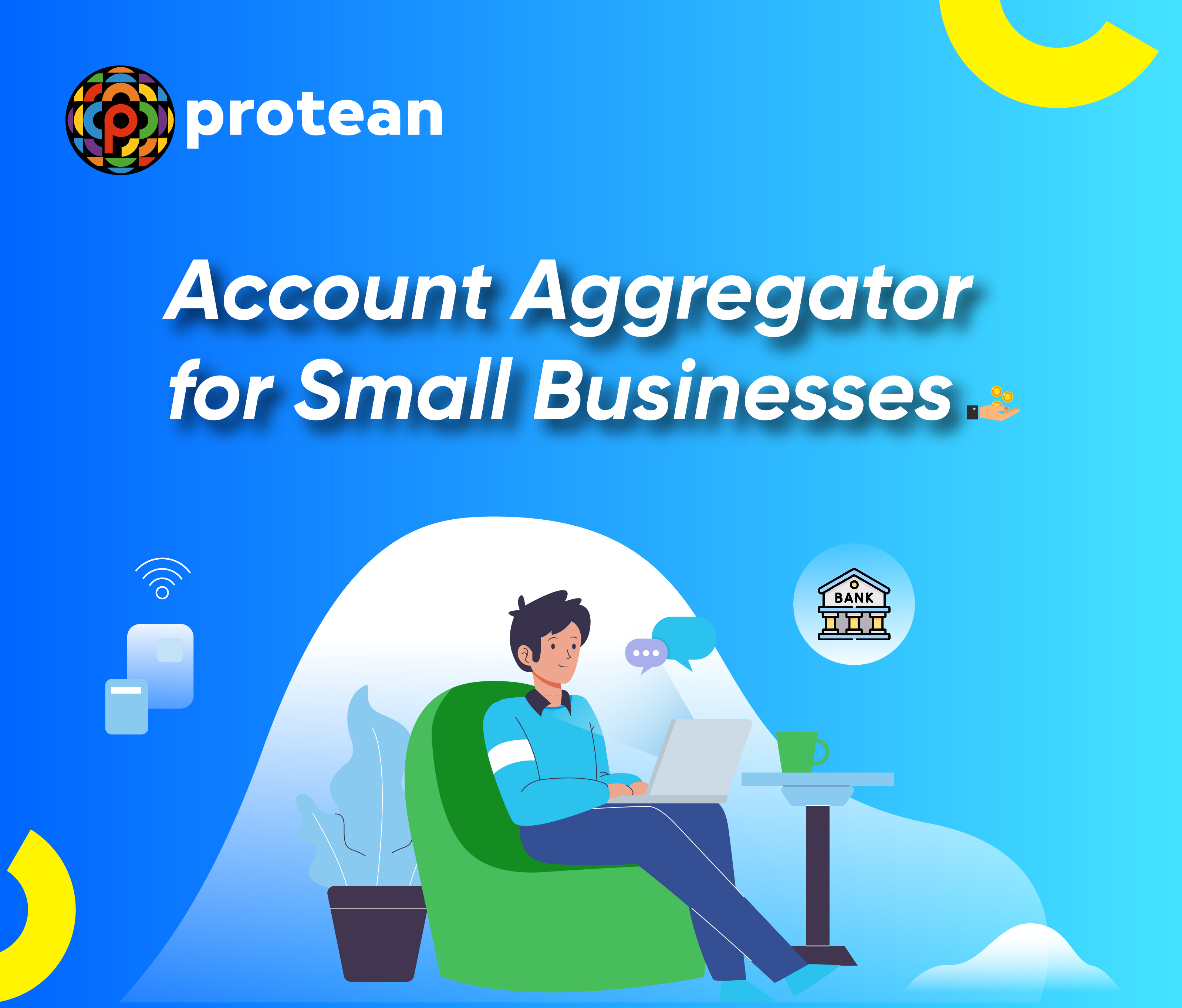MSMEs (micro, small and medium enterprises) contribute nearly 30% of India's GDP and generate millions of employment opportunities both in urban and rural India. However, the financial statistics show that merely 39% of businesses get benefits from the much-needed business credit. The problems regarding lack of access to credit may be due to pressure of collateral, low-ticket size, unprofessional way of maintaining financial data and more.
Considering this issue, the Government of India has launched the cutting-edge Account Aggregator in India while making the financial data sharing approach secure among users, lenders and fintech companies. Till date, 531 institutions are working under this network. This has streamlined the credit system and other financial services among individuals and MSMEs
What is an Account Aggregator Network?
Launched by the Reserve Bank of India on Sept 2, 2021, Account Aggregator is a consent-based data-sharing system. Its introduction has streamlined the accessibility of valuable financial data of an individual or small business, registered under AA while having better control over their financial information. Individuals and businesses can share those data among financial institutions with absolute security.
The account aggregator framework is expected to transform credit, investment, and insurance by making them more effective and efficient, lessening the asymmetry in information transfer and risk in information systems. As of now, Account Aggregator in India consists of three groups including Financial Information Providers (FIPs), Financial Information Users (FIA) and Account Aggregators.
Let us have a look at the complete infrastructure:
Financial Information Providers (FIPs)
As a data fiduciary, it collects and holds users' or customer's data. The group may include banks, NBFCs, insurance companies, Mutual Funds and more. They are responsible for sharing the customer's financial information through the AA digital platform with the user's consent.
Financial Information Users (FIUs)
Financial Information Users include banks, credit card companies, insurance etc. After securing the authenticated data of FIP, FIU, like lending institutions, determine the creditworthiness of a borrower or a small business applying for a loan. In this model, banks play a twofold role – both as a FIP and FIU.
Account Aggregator Platforms (AAs)
AAs allow the sharing of data sources like mutual funds, bank deposits, pension funds etc. between FIPs and FIUs. Working as a link between these two platforms, AAs enable data flow among the entities digitally, safely and securely. Noteworthy, AAs cannot make use of the data of a user for any other purpose. They are permitted to organise, store and share data only after having the consent of the user.
Therefore, small businesses or individuals having an account in AA can avail this whole range of services, thereby transferring the finances along with personal data to financial entities while opting for a loan or any other financial services with no more risk of data loss or hacking.
Now, for a better understanding, here is an example:
Assume XYZ, a small business owner, applies for a business loan to a bank to meet their working capital. Now, the banker will be required to process the loan application form of the borrower while having to go through the different financial information to determine its creditworthiness. With the emergence of account aggregators in India, a lending institution can easily access the detailed financial status of the borrower including its savings, holding in insurance, mutual funds, and earlier loan repayment record through the digital platform. However, for this, a borrower will be required to give consent to AA to share their personal data with the banker.
Similarly, the facility of AA services will no longer require the user to share their hard copies of these sensitive documents physically. This streamlines the whole financial services, accelerates its process and lowers the chances of loan application rejection.
How Does the Account Aggregator Network Function?
Using AA, individuals use their financial data to access an extensive range of financial services for their personal or business needs.
The AA model works in the following way:
Step 1: At first, a person or business opens an account with the account aggregator. After this, they keep a record of their financial data by linking their respective bank accounts, insurance policies, etc.
Step 2: Subsequent to this, the individual provides consent to the lending institution so that the latter can access the former’s financial data via NBFC-AA. In general, this situation arises when the customer is in the quest for a loan or other financial product which requires their financial details.
Step 3: Once the consent is passed, the account aggregator requires permission from financial data providers in order to access the customer's information.
Step 4: Finally, as the data is conveyed to the account aggregator, it empowers the lending institutions to evaluate the customer's financial background in a better way. By doing so, lenders can analyse the credit profile of the borrowers to determine their creditworthiness.
What Issues Are Faced by Small Businesses in Financial Borrowing?
Here are the major challenges, small businesses face in funding backup:
Lack of Credit Score
When it comes to funding a small business, most banks are found unwilling to support them may be due to their low investment profile in business making them uncertain about their capacities to repay. Moreover, lack of financial history, failure to maintain a stable credit rating, and lack of financial records of MSMEs seem to be major risk factors for allowing credit. Even if allowed, the lending institutions offer every strict eligibility criterion making it challenging for small businesses to go ahead. Also, the long and hectic process of their loan approval process is very disappointing for small business owners.
Inability to Provide Collateral for Loans
Another major challenge experienced by small businesses to get their desired business loan is the ability to meet the collateral requirements of banks. This makes them trapped by private lenders who offer unsecured business loans by charging an intensely high interest rate that eventually eats their revenue and prevents them from growing. Although many small and micro businesses involved in handicrafts, marble, and stonework enjoy a booming market overseas, the lack of MSME lending makes them collapse within a few years.
Inadequate Financial Education
While having excellent business acumen, unfortunately, many small business owners lack in terms of their financial knowledge to make appropriate business decisions. Their inadequate knowledge leads to increased operating costs while lowering their debt scores. Even today, many businesses are not aware of the newest financial backup technology used by many NBFCs as well as online lenders. Moreover, their poor knowledge of finances makes it critical for them to make a proper financial decision. For instance, businesses in India can opt for Account Aggregator, the cutting-edge online platform for small business loans.
Outdated Technology
Many small entrepreneurs fail to leverage the benefits of the newest technological advancements due to their unawareness of them. Despite the RBI programs like the India account aggregator and introduction of FinTech model businesses, many small businesses remain deprived of the needed technology development that helps them to stay ahead of the competition, particularly in the rural areas in India.
How Can Account Aggregator Framework Help?
Account Aggregator helps individuals and companies in the following ways:
- The Account Aggregator financial data-sharing network helps micro, small, and medium enterprises (MSMEs) in credit access immensely by quick data sharing and enlarging the scope of financial services.
- The data exchanged via AAs is encoded by the sender and can only be deciphered by the recipient. AAs do not store, manipulate, or sell consumer data. Their main objective is to convey the same from one lender to another as directed and consented to by the individual.
- In the Account Aggregator system, a customer or company can access accurate and secure data quickly at a reasonable price, expediting the loan processing and enabling the consumer to get credit approval quickly.
- The Account Aggregator (AA) system has the ability to make financial and wealth management more effective and worthwhile since all financial information is held in one place.
What is the Top Account Aggregator in the Market?
Protean SurakshAA is an efficient and secure mobile app launched by the NSDL e-Gov Account Aggregator Limited. Formerly known as NSDL, Protean is devoted to encouraging start-ups to manage and flourish their business. Since its commencement, Protean has been managing many small to large-scale government projects like the National Pension System, Atal Pension Yojna (APY), PAN and TIN, and Aadhaar-based ID authentications.
Protean SurakshAA is available as an IOS, Android, and Web App. In the application, individuals have to give their permission to the account aggregator for data sharing. Only financial institutions like banks, insurance providers, mutual funds, etc. are able to access this information. The app operates under the account aggregator-based framework of the Reserve Bank of India (RBI) and aims to bestow Indians more control over their important financial data.
Key Takeaway
In a nutshell, Account Aggregators in India are gradually reshaping the entire financial industry. They offer a secure and convenient way of managing and transferring financial data. Even though most of the large players in the banking sector are not a part of this ecosystem yet, it is estimated that most of them will join shortly.
Recently, the Account Aggregator framework of India has recorded 1.1 billion AA-enabled accounts and 2.05 million users sharing financial information with banks and lending institutions to get loan approvals faster.
If you want to install an account aggregator app for managing your financial data, installing the Protean SurakshAA app is recommended. It is one of the best and safest account aggregator apps available in the market.
Frequently Asked Questions
1. How account aggregators in India differ from credit bureaus?
Noteworthy that account aggregators get access to data from the users' prevailing and savings accounts. This distinguishes them from Indian credit bureaus like Experian and Credit Information Bureau India Limited (CIBIL), which only focus on collecting credit data or liability data.
2. How many account aggregators are registered under the Indian account aggregator ecosystem?
There are a total of 94 financial institutions which are registered as Financial Information Users (FIUs) in the account aggregator ecosystem. Out of them, 2 are PFRDA-regulated, 9 are IRDA-regulated, 10 are SEBI-regulated, and the remaining 74 come under the regulation of the RBI.
3. What are the essential factors to remember while choosing an account aggregator?
Following are the important factors to consider while choosing an account aggregator:
- Kind of onboarding
- Financial Institutions Coverage
- Reliability
- Documentation
- Pricing
4. What are the steps to create an account on Protean SurakshAA?
To open an account, individuals have to navigate to the official website of Protean SurakshAA or download the app on their smartphone in the first place. Then, they have to complete the registration with the necessary credentials and add all their accounts. After this, they either have to confirm or deny the consent to data sharing with the other platforms.

